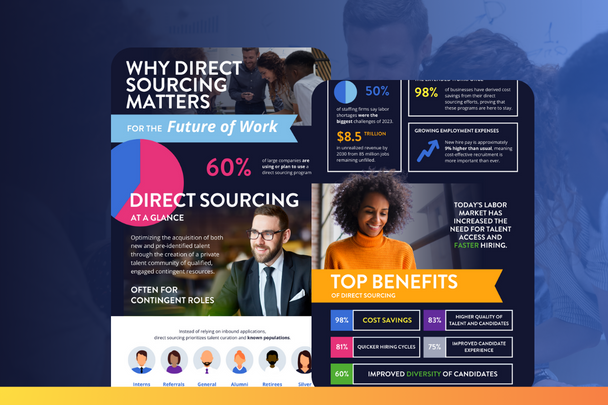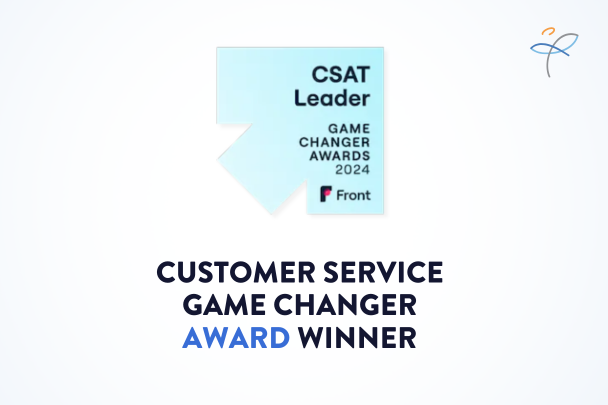If you want something done right, you just have to do it yourself, right? As a former buyer of contingent labor for a Fortune 100 company, I stood up an internally managed contingent labor program (PMO). The adage rings true for me then, right? Not so fast. Now that I’m back on the MSP side and reflecting on my PMO days, I find myself saying “How did I do that?” and “Should I have gotten a 3rd party partner?”.
With the Great Resignation still happening and the rise in the use of external labor, this has been a hot topic with several of our prospective clients. So, which is better? As with most things in life, it depends, but here are some factors to consider when deciding between an MSP vs PMO for your contingent program:
What are your overall goals for the program?
To know who you need on your journey, you need to know where you are going. What problems are you looking to solve? What do you envision your talent ecosystem looking like in 1 year, 3 years, 5 years? Consulting your workforce planning and analytics team is helpful in this stage as well. Once you define your goals, move to consideration number 2.
What is the maturity level of your current state?
As noted by Kelly Couto, VP of Enterprise Solutions at Atrium in a recent article, “the key question is whether your current state meets the needs of the program that was built based on prior state. In other words, is it the right time to make incremental changes or enterprise level changes?” Part of your decision between and MSP vs PMO should be determined by looking at what is currently in-scope vs the total external workforce landscape.
Temps and contractors? Check. Interns? Sometimes. SOW workers and people-based projects (1099s)? Occasionally. Generally, if these four categories are areas that an organization is ready to add in-scope, it may be time to look at the market for new solutions.” I would also add Direct Sourcing to this list. Answering these questions, coupled with question 1, can help direct you to the right decision for your organization.
How complex is your organization and your needs?
Yes, I know, you are unique. Every company is. Think about your answers to factor 1. Do you have a laundry list of goals and different business units, sites, and stakeholders with different needs? What about a large population of Independent Contractors globally? Great, an MSP can help make sense of the complexity and check those items off your list. (Check out this article for considerations on Independent Contractors)
If you have satisfied hiring managers, are looking to streamline an existing process and bring in a tech to make life easier, an internal team should be able to handle this.
What does your Tech Stack look like?
This goes back to #2 but from a technology perspective. An MSP can help makes sense of the “Alphabet Soup” of HR Tech and help get you to the next level if your current state could use some upgrading. If you have an amazing HRIS product that is plug and play with a VMS product on the market, you likely don’t need a 3rd party to support.
What is your timeline?
Quick deployment may mean an MSP Partner is a better choice. An experienced partner with existing internal resources will be able to implement and help you scale faster. However, the in-house route may be viable if you already have existing resources in house with the expertise to deploy a solution quickly.
Notice that I didn’t add “Do you have the budget” to this list. Why?
99% of organizations will respond to this consideration by saying “there is no budget” and focus on what the “cheaper” option would be. What if I told you there is already money being spent on your program and the question isn’t IF you have the money, but HOW will you repurpose it to be more efficient and effective? This is true even of a Gen 1 program with no MSP.
Your managers are spending their time (which costs you money) calling agencies, signing agreements, etc. (or just trying to figure out what to do to bring on a non-employee!). Your HR is chasing down compliance items, your procurement team is working on agreement after agreement and overall, you are probably paying too much for these workers. An MSP OR a well thought out internal program will save you money.
Bonus tip: Supplier funded programs are typical for both an MSP and an internal program so there is no difference in that model on either side. Double bonus tip: Having the right talent at the right time at the right price will bring good ROI.
What about a blended approach?
An SIA article from 2020 suggests that MSP vs PMO don’t have to be mutually exclusive and I would agree. Referencing the list of considerations will help determine if this is a right approach for your organization.
So, what’s the verdict? Should you go in-house or work with an MSP for your contingent workforce program? The answer is, it depends. Both options have pros and cons, and the final decision should be based on your specific company needs and culture. Hopefully, this article has helped give you a better idea of those needs and which option would be the best fit for you. If you have questions or want more information about either approach, don’t hesitate to reach out – we’re always happy to help!








